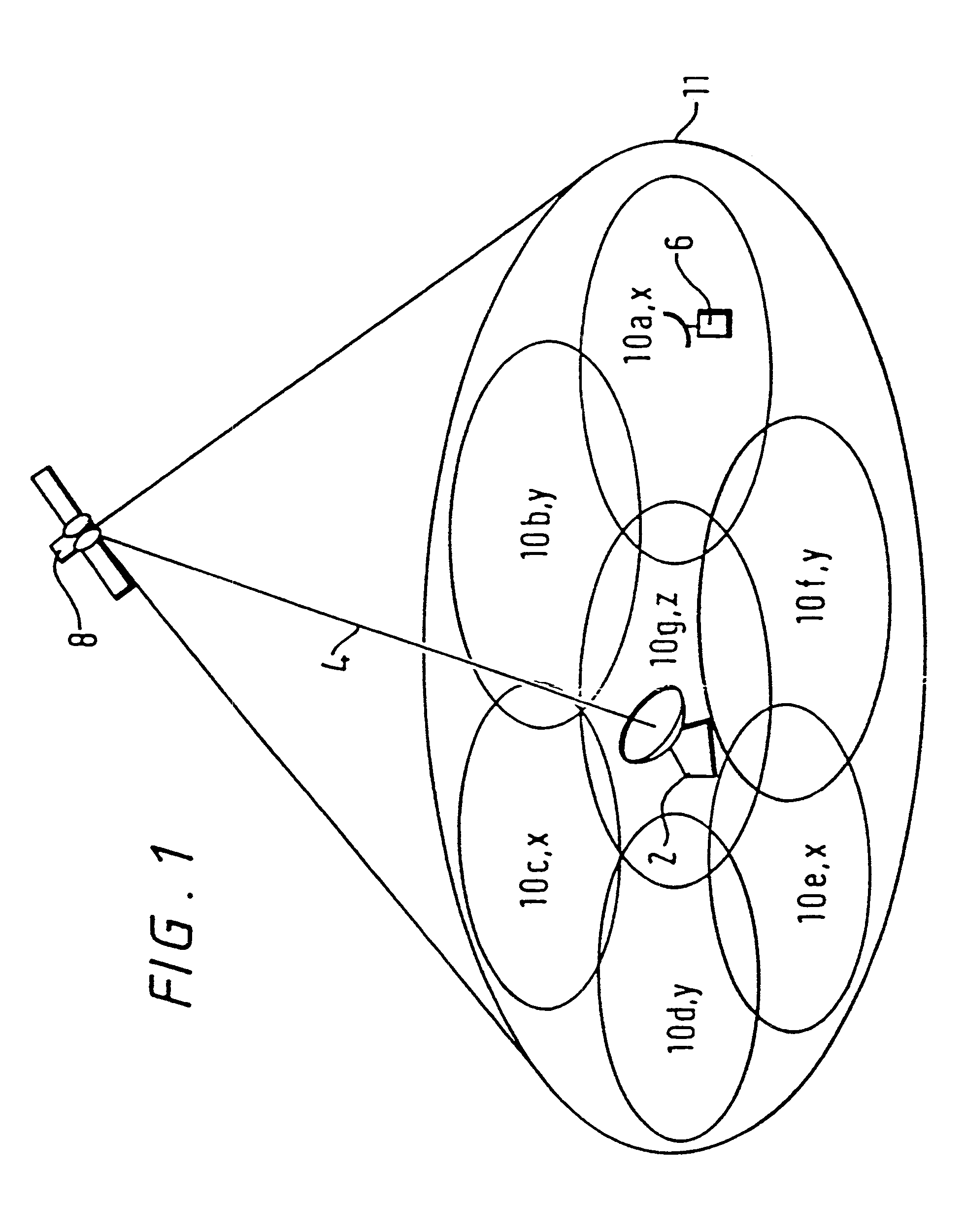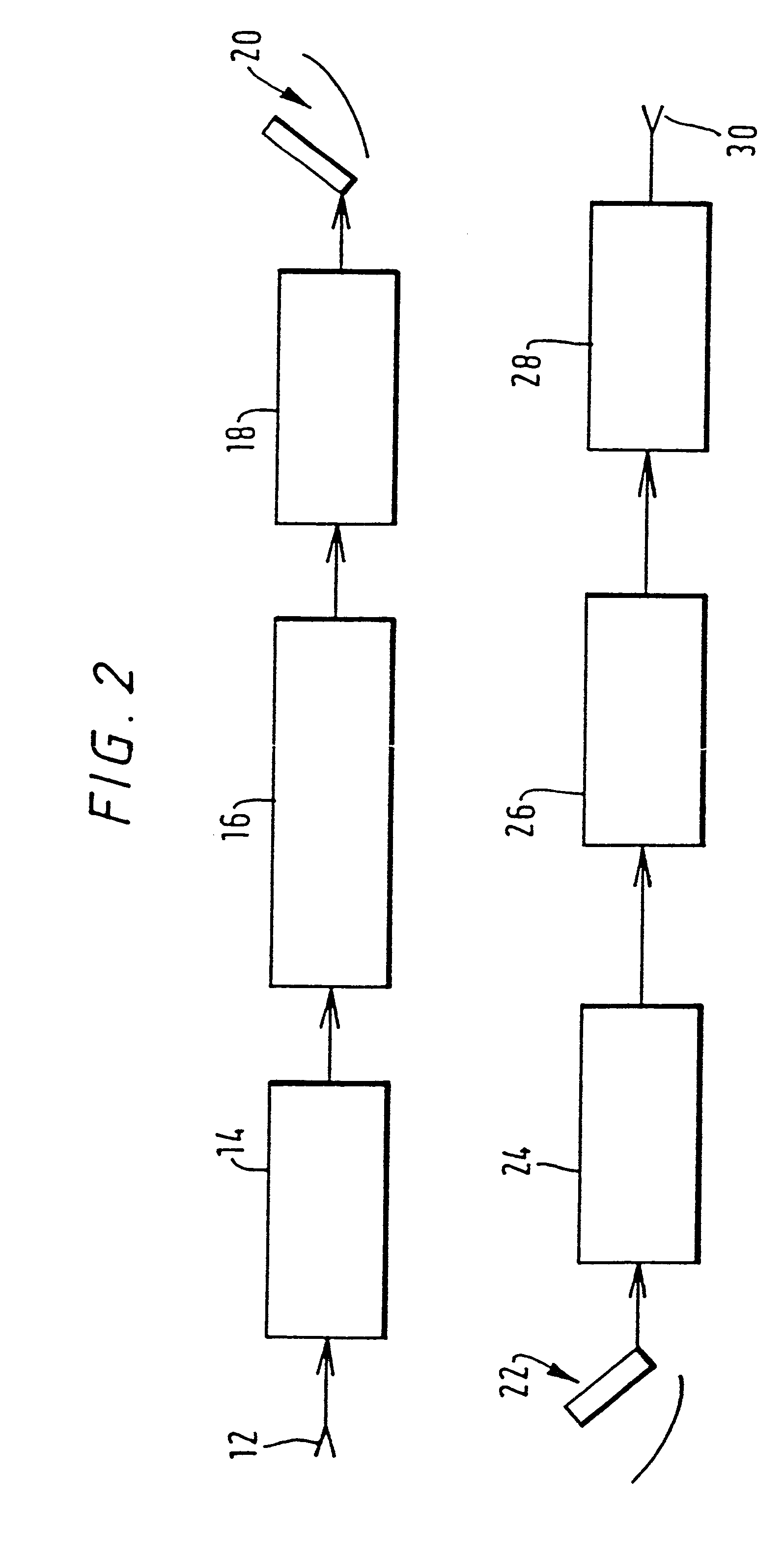Spot beam location method and apparatus
a technology of spot beam and location method, applied in the field of spot beam location method and apparatus, can solve the problems of high power consumption, waste of frequency spectrum, and complex circuitry
- Summary
- Abstract
- Description
- Claims
- Application Information
AI Technical Summary
Benefits of technology
Problems solved by technology
Method used
Image
Examples
first embodiment
The first embodiment relies on the ability of the satellite 8 to receive the same signalling channel in all of the spot beams. However, conventional satellites are designed not to receive the same frequency channels in overlapping spot beams. Instead, the spot beams are divided into three or more groups, labelled as X, Y and Z in FIG. 1. All the spot beams in the same group are allocated the same frequency channels, but because the spot beams within each group do not overlap, there is no transmit or receive interference in these channels.
second embodiment
the present invention is similar to the first embodiment, but is applied to circumstances when the satellite 8 divides spot beams into groups as described above. In this embodiment, a different return signalling channel is allocated to each of the groups X, Y and Z. For example, the satellite 8 receives a first signalling channel at frequency f.sub.1 from all the group X spot beams, a second signalling channel at frequency f.sub.2 from all the group Y spot beams, and a third signalling channel at frequency f.sub.3 from all the group Z spot beams. Group X comprises Spot beams 10a, 10c and 10e; the first signalling channel received from spot beam 10a is retransmitted at frequency f.sub.1 in the feeder link 4, the first signalling channel received from spot beam 10c is retransmitted at frequency f.sub.2 and the first signalling channel received from spot beam 10e is retransmitted at frequency f.sub.3. Likewise, the second signalling channel received by spot beams 10b, 10d and 10f is re...
third embodiment
the present invention is applied to a terrestrial cellular communications system assisted by information broadcast from a satellite. As shown in FIG. 10, the terrestrial cellular system comprises a control centre 72 connected co a plurality of base stations 70a to 70e, each of which is able to transmit and receive signals over an area which defines a cell. A communications link is established between a mobile terminal 76 and the control centre 72 through the base station 70d which defines the cell into which the mobile terminal 76 falls. A satellite 74 broadcasts signalling channel information over an area 78 which encompasses all of the cells. Each co the base stations 70 is arranged to receive the same signalling channel. The mobile terminal 76 receives information broadcast by the satellite 74 which indicates the signalling channel, and transmits a signal on the signalling channel, which may be received by any of the base stations 70. The control censure 72 compares the strength ...
PUM
 Login to View More
Login to View More Abstract
Description
Claims
Application Information
 Login to View More
Login to View More - R&D
- Intellectual Property
- Life Sciences
- Materials
- Tech Scout
- Unparalleled Data Quality
- Higher Quality Content
- 60% Fewer Hallucinations
Browse by: Latest US Patents, China's latest patents, Technical Efficacy Thesaurus, Application Domain, Technology Topic, Popular Technical Reports.
© 2025 PatSnap. All rights reserved.Legal|Privacy policy|Modern Slavery Act Transparency Statement|Sitemap|About US| Contact US: help@patsnap.com



